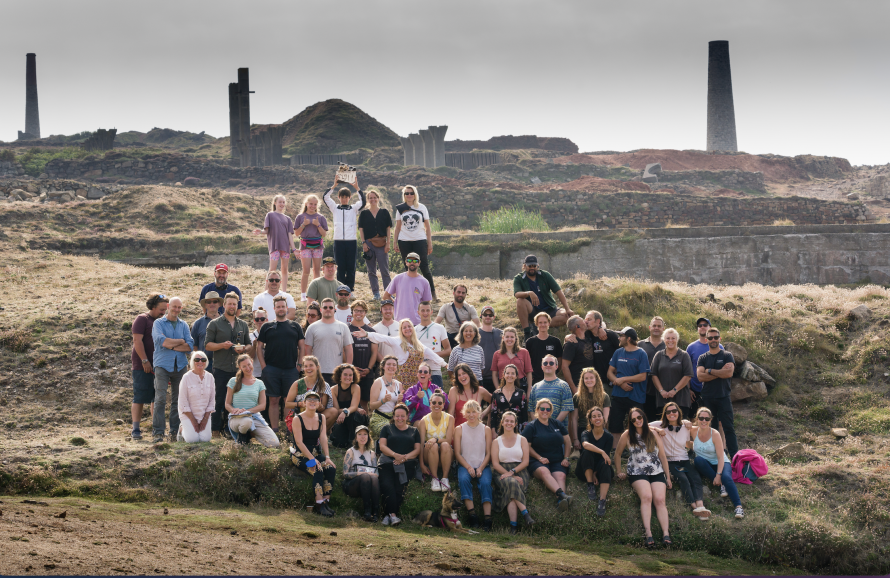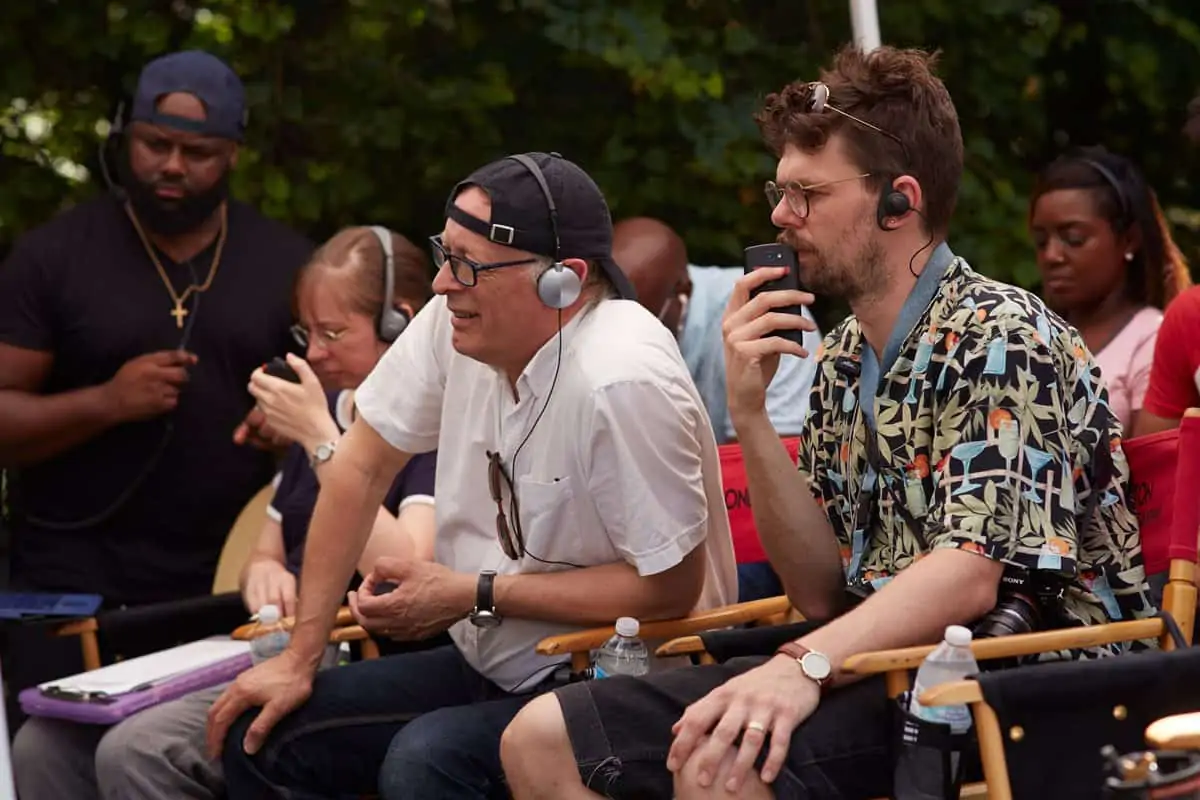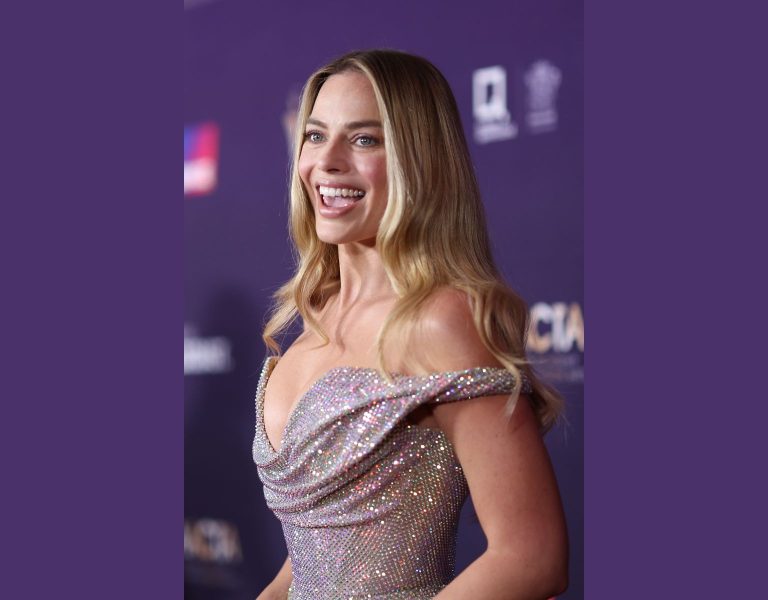The age of innocence
Young Evie’s summer trip to the Cornish countryside takes a sinister turn in Edge of Summer, director Lucy Cohen’s narrative debut lensed by Rachel Clark.
Set in 1990, Edge of Summer follows 11-year-old Evie (Flora Hylton) as she goes on holiday to Cornwall with her mum. She soon meets local boy Adam (Joel Sefton-longi) and when the pair venture into an abandoned mine, trouble ensues. The feature was part of the 2023 Cannes Great8 showcase of British films and premieres at Glasgow Film Festival on 9 March 2024.
Cinematographer Rachel Clark’s career behind the camera spans 20 years and recently saw her nominated for a BAFTA for her work on I Am… Ruth. She had an instant connection with Lucy Cohen and her vision for Edge of Summer, the director’s first foray into narrative features, when they first met in 2020. The film was eventually made during summer 2022; here Clark reflects on the fun-filled yet challenging shoot, working above and below ground on location in the West Country.
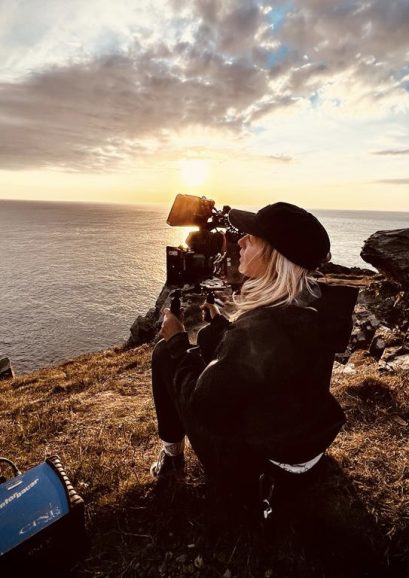
British Cinematographer (BC): How did you get involved with Edge of Summer and what appealed to you about the story being told?
I got involved with Edge of Summer back in 2020! The director, Lucy Cohen, and I had our first meeting during COVID times, which involved us walking round and round in the rain as we couldn’t sit inside anywhere together. We walked round a local park discussing the film, the script, our favourite movies and much more. From that first meeting we just clicked straight away and talked for hours in the pouring rain without even minding about getting soaking wet.
After being offered the job, it was another 1.5 years before we got to make the film. The two lead cast members are very young,10 and 12 years old, which meant we needed to shoot during the school summer holidays. In the summer of 2021 the cost of COVID testing and working with COVID restrictions was just too prohibitive. Being such a small indie film it simply wouldn’t have been possible to make the film at this time. The shoot postponed until Summer 2022 and thankfully I was still able to be part of the shoot at this time.
I loved Lucy’s script as soon as I read it. It so wonderfully explored this idea of adolescence and loss of innocence. A child’s wonder and amazement coupled with real moments of darkness and exploring heavy adult themes. I was excited about the visual possibilities within the film so perfectly described in the script.

BC: What were your key talking points in your initial conversations with Lucy about the film’s look and mood?
It was so long ago it’s hard to remember what the initial conversations were. I remember we talked a lot about perspective and point of view. How we could explore the world through a child’s eyes and experience things with them rather than looking at them. We talked a lot about loss of innocence; that pivotal moment in a young person’s life when they start to have an awareness or understanding of the adult world. When imagination and fantasy give way to reality.
We wanted the young people to be the main characters and for the adults in the film to almost be peripheral or in the background. I remember looking to classic movies like The Goonies, E.T., Stand By Me: these films don’t look down on the children; the children are the main focus of the film and the adults are almost side bar characters.
We talked a lot about magical elements from everyday life. Dust swirling in front of an open window, light hitting a wall and bouncing back to create an interesting shape or shadow, dapples, textures, a rainbow hue caused by refraction of light hitting the floor. As adults we perhaps dont register these things as special, we might see dust floating around in the air and think it was dirty, but a young person might see it and be filled with wonder. We wanted to try and pepper the film, and the children’s world within it, with these elements.
By the end of the film these two characters are no longer the innocent children we met at the beginning. We wanted to explore how to represent the children’s innocence diminishing throughout the story. In the beginning of the of the film Adam and Evie would notice these “magical” things, marvel at them, but by the end of the film they are rendered mundane, not noticed at all.
We talked about films like The Wonders, Petite Maman, Tomboy, Beasts of the Southern Wild and Wendy for their treatment of children and how magic or fantasy was woven into the film. Playground was another interesting film we looked at. It was shot entirely from the perspective of a child, low down at their eye level.
For the colour palette I looked at a lot of old 35mm photographs from the time. These were used as a starting point when creating a show LUT and for the grade. We also played around slightly with colour saturation and contrast in the grade to track this journey of adolescence the characters were experiencing. Slighter warmer and more saturated tones in the beginning of the summer, and by the end of the film, ever so slightly muted and less contrast.

BC: Take us back to prep. How long did you have and what research did you do?
RC: I had around five weeks of official prep, but we started earlier doing a few days a week “soft prep”, splitting our time between London and Cornwall. We’d take the sleeper train down to Cornwall for a couple of days to scout locations and then prep together back in London for a few days, eventually relocating to Cornwall full-time.
In prep a fair amount of time was spent scouting together, and Lucy spent quite a bit of time casting and workshopping with our two main young cast members.
I spent a lot of time in prep thinking about the scenes down the mine. All DPs love it when they read in a script “complete darkness”. How dark is dark? Do we see anything? How much do we want to see? So lots of conversations were had with Lucy and the producers about this to make sure we were all on the same page.
The kids go down the mine quite a few times throughout the course of the film with only a miner’s headlamp, a lighter, and on one occasion nothing at all, in total darkness. It was important for Lucy that it felt real. She wanted us to really feel we were experiencing this dark, scary and magical place with the children. There is no ambient light deep underground, down a mine. It should feel like they were lighting the way themselves with only their torches.
This was obviously a concern for me, would it really be possible to light whole emotional scenes with headlamps? Headlamps that were on top of the heads of two young child non-actors. I was conscious I mightn’t have the control I needed. I didn’t want to be prescriptive with the actors about what to do with their head movements. I wanted to give them as much freedom as possible and not interfere with their performances.
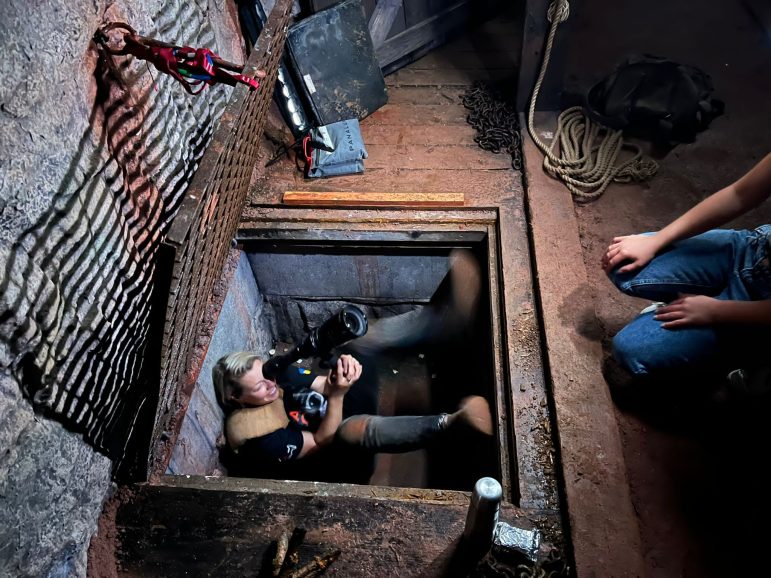
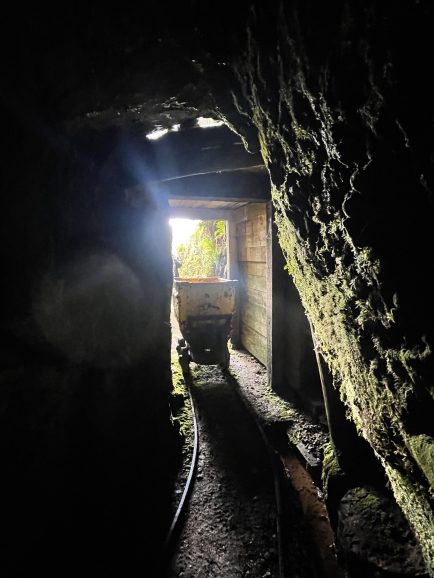
BC: Tell us more about these miners’ lamps…
RC: I did extensive research into the miners ’ headlamps. I feel like I did nothing but talk about headlamps for weeks and weeks, everyone was bored to death of me going on about them by the end of prep.
I spoke to local miners about what would have been used down the mine at that time. The film is period so it was important for the headlamps to be authentic to the time.
The period-correct headlamps were small incandescent bulbs which gave off a very low level of light. They were powered by these really heavy lead-acid batteries which were mostly dried up and non-functional. I knew this wasn’t going to be an option for us in terms of lighting for the film but I was conscious I wanted to keep this warmer feeling for the lighting. The more modern miners’ headlamps used today are rechargeable LED. Some of them are extremely bright but the quality of light they produce isn’t that nice. While these lamps gave me plenty of exposure level – almost too much! They didn’t offer any exposure or colour control, which I knew I would need.
I looked into using modern LED lamps, gelling them with colour and ND and asking the art department to make them look period, or putting some sort of small bright torch inside a period headlamps but I knew neither of these options would give me the flexibility I needed for the shoot. I needed something I could adjust quickly throughout the day, as per the shot requirements.
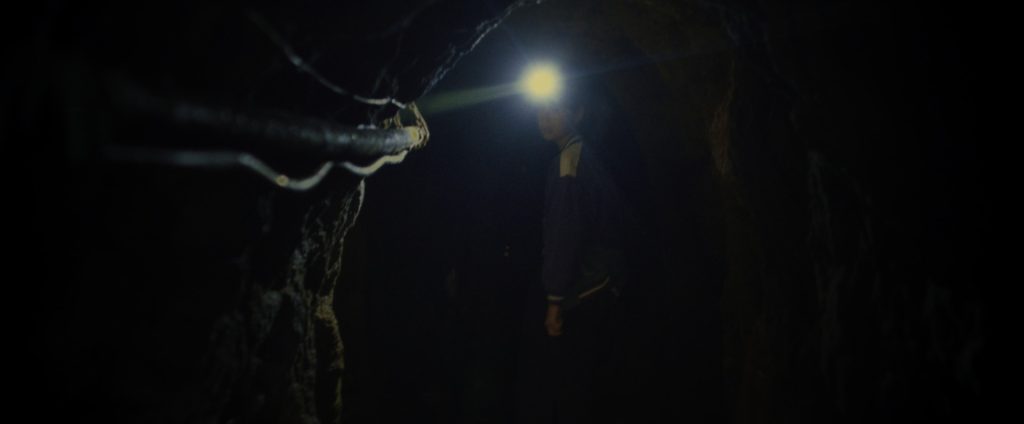
I ended up with a whole collection of head torches for different purposes which I worked closely with costume designer Oliver Cronk and the electrical department to manage.
We had “in vision” head lamps with the period-correct bulbs inside. These were worn by the kids when they were above ground and didn’t need to turn on the lamps. My practical electrician Rob Jenkins safely removed the old lead-acid battery from the belt pack making it much lighter for the children to wear.
We ended up making our own custom, LED-controlled headlamps for below ground which gave us bi-colour and brightness control. This was fitted inside a period-correct headlamp and the RF controller hidden inside the old, decommissioned battery belt pack. Rob Jenkins was brilliant in helping with all the R&D and production of these alongside our gaffer Bruno Martins. Bruno was able to control the headlamps remotely from his wireless DMX Gaffer’s Box whilst down the mine, which made adapting to each particular shot really easy.
I added Vaseline to the headlamp lens to help obscure the LED diodes and in the grade we also blurred them and added some flare elements.
While being a brilliant solution to many of my lighting requirements, the custom LED headlamps didn’t create that satisfying single beam of light I was searching for. For wide shots or POVs where you couldn’t see the headlamp in vision I used some of the more modern LED headlamps with colour correction added to the lamp lens. The beam and intensity of these lamps was incredible, so I utilised those as much as possible when I could.
We did a lighting test down the real mine in prep so I could show Lucy varying degrees of ambient light inside the tunnels, and test all the various headlamps and lighters for the shoot. Our instinct was to have no ambient light but I wanted to explore what that might look and feel like to make sure we were making the right decisions. I was also very keen to check exposure levels from my various Headlamps and Lighters.
All the tunnel scenes down the mine are genuinely shot with only the headlamps the kids are wearing or the lighter they were holding. The only additional source was a little headlamp or lighter I was holding near camera, at times, for a small amount of fill or lighting control when the kids turned away or their headlamp was pointing in the opposite direction.
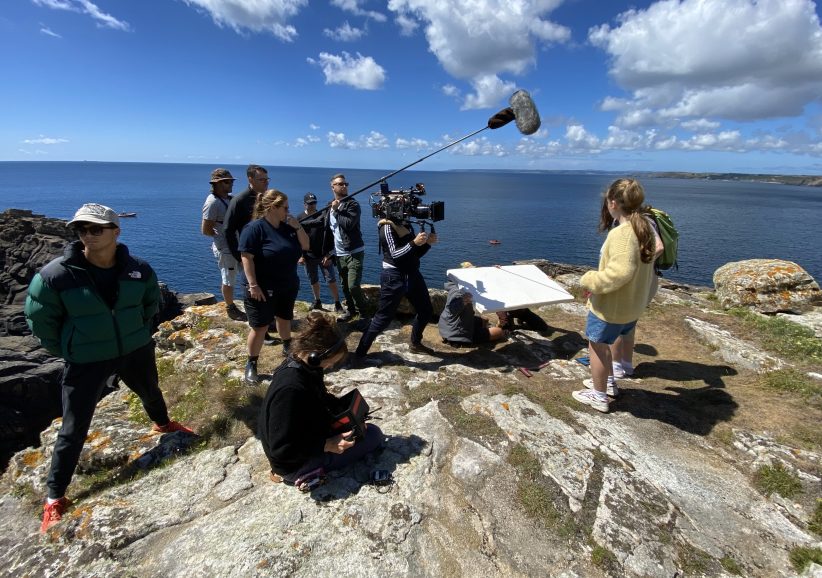
BC: You shot Edge of Summer on location in Cornwall – what was that like? How involved in scouting were you?
RC: Lucy had written the script with the village of Pendeen in mind having gone back and forth during the writing process, so many of the locations actually existed. Due to budget restrictions we couldn’t base the entire production in Pendeen, but we did shoot in Geevor Tin Mine in the village, which abruptly closed down in 1990 (when our film is set). It’s still there today, preserved as a museum which we shot in for a number of scenes. The locker rooms and check-in areas have been so well preserved, it’s like someone just went to get a cup of tea and never came back. It was a real gift getting to shoot in such a place that is so important to the local community and history.
We shot in the summer holidays which meant it was peak holiday season down in Cornwall. Due to accommodation availability and budget restraints we couldn’t be based in our hero village for the entirety of the shoot. The shoot was split between Pendeen on the West Coast of Cornwall and Falmouth on the East Coast. The tricky thing was finding locations that worked on the Falmouth coast that fit into the Pendeen aesthetic, and were also period correct. Our hero exteriors and houses were in the village of Pendeen and anything that could be shot elsewhere was shifted to the Falmouth portion of the schedule.
Ideally we’d have shot in chronological order for the young non-actors but with some many other restrictions in terms of time, budget, period and so on, this soon went out the window. In fact, the cast were so incredible we needn’t have worried about them at all. They blew me away every day with their performances and levels of emotional intelligence.
The mine scenes were split across three locations. There was the exterior mine, on an amazing clifftop in the real location of Pendeen, then we had access to a private mine near Zennor which was incredible, I fell in love with it, it was a very special place indeed. Shout out to Tony the miner who put up with my constant questions, strange requests and openly shared his passion for mining and preserving local history with me. In Zennor we shot all our underground tunnels and entrances and exits. Finally, we had a set build for the dialogue scenes around the hole. The real mine would have been a dream to shoot in for longer (and believe me I tried) but it just wasn’t practical from a logistical point of view.
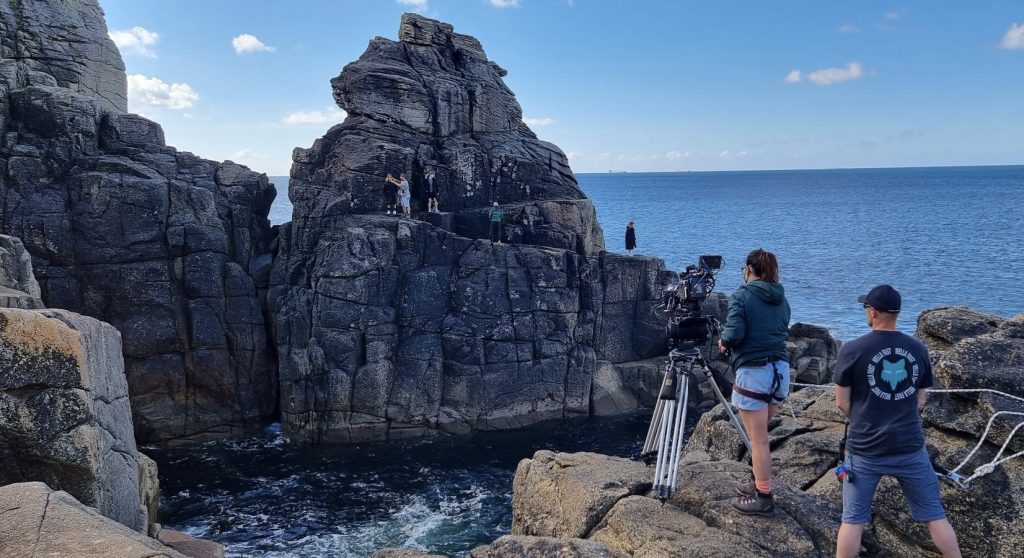
BC: When was principal photography and how long did you have?
RC: 25 days in the summer of 2022.
BC: What camera and lenses did you use and why did you choose them?
RC: We chose the Sony Venice (with Rialto extension system) and Panavision Primos, and the job was serviced by Panavision and Panalux.
I chose the Venice as I knew low light conditions were such an important factor for the mine scenes. I’d also used it on previous productions and been very happy with the results.
Flares were something I put a lot of thought into. I knew for a vast percentage of the film, the two leads would be wearing head torches. These bright sources of light on top of their heads would often be pointing directly toward the camera.
I needed to find a lens that would give me a beautiful, satisfying flare, but also one that wouldn’t bleed across the actors’ faces. So many emotionally heavy scenes take place down the mine, so it was important we could see into their eyes, feel their expressions and emotions.
I did extensive lens flare tests at Panavision. We couldn’t afford my first choice of lenses (Sphero 65s) but the Primos were also a strong contender. I felt good about using Primos as I’d used them many times before and loved them, they’re very beautiful. We sensor cropped the Venice to S35 mode to accommodate for the Primos. I’ve since used the Sphero 65s on other projects and while I think they’re stunning, in hindsight the Primos were the better choice for the film. I can’t imagine the film being shot in on full frame large format sensor now. I love it the way it is.
Apart from the spherical Panavision Primos we had a single 50mm PV anamorphic lens for certain moments in the film. I wished we could have used this more, or even shot the whole film on it; it was absolutely gorgeous and every time I put it on the camera I felt giddy with joy.
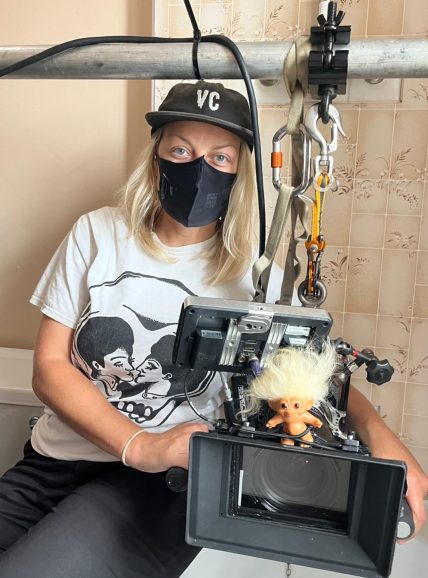
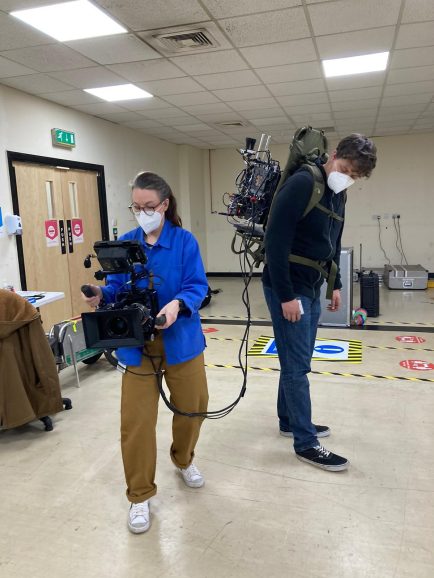
BC: What were the main cinematographic challenges of the shoot?
RC: A really tight schedule and micro budget, coupled with children’s hours, all added to the pressure of the what we could reasonably achieve. Thankfully we were blessed with incredible weather, stunning Cornish natural Light, an incredible young cast who smashed it out of the park every single take, and I was supported by a brilliant camera, lighting and grip team.
The mine was a challenge: Shooting across three locations and relying on the kids to light scenes for me with head torches, as mentioned earlier.
In the mine set I requested wet-downs and little water drips rigs and shimmering paint to match the real mine. I wanted it to feel as real as possible and for light to bounce off surfaces in the same way. I did everything I could to make the environments feel the same for both audiences and cast.
The magical moments: Lucy’s script was so wonderful and full of metaphors, woven narratives and magical moments. We tried so hard to retain as many of these as we could, but often it would come down to time and money and these had to be simplified or cut which is a real shame. I still hope the film retains this magic at its heart, as we carried it with us through the shoot.
There were quite a few scenes scripted as magic hour or night. I did extensive day for night testing in prep and loved the results; the day for night look would have definitely leaned into the magical aesthetic of the film. Ultimately though we just couldn’t afford VFX sky replacements on the number of shots it would have been required and didn’t have luxury of waiting for sun or cloud. So many of those scenes took place on clifftops which would have made using large frames for sunlight control impossible. This is a technique I’m definitely carrying around with me in my mind, looking for the right moment to use it.
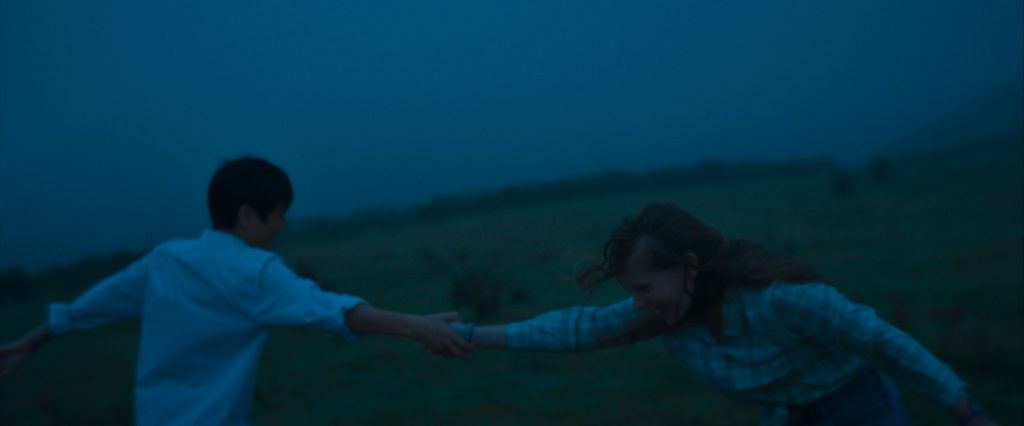
BC: What were the challenges of lighting the interiors, such as Adam and Evie’s houses?
RC: The hero houses we shot in for both Adam and Evie were chosen primarily for their location within the landscape. They were both located in quite exposed places, susceptible to fast-changing weather and occasional strong winds from the coast.
Access to bedroom windows on both houses was quite restricted. It wasn’t possible to have lamps outside the windows as there were obstructions on the ground floor blocking access. It was also unsafe at times to raise lamps to that height due to wind. This made lighting scenes quite difficult. We wanted to light as much through windows as possible and keep the set clear of equipment.
The solution to this was the CRLS reflector system from Lightbridge. We utilised larger reflectors outside the house and smaller ones inside the room. This allowed us to keep the lamps low (due to high levels of wind) and manoeuvre the mirrors around into difficult spots where it wasn’t possible to put lamps. The CRLS system solved a logistical problem as well as being budget-friendly and allowing us to re-light quickly as required.
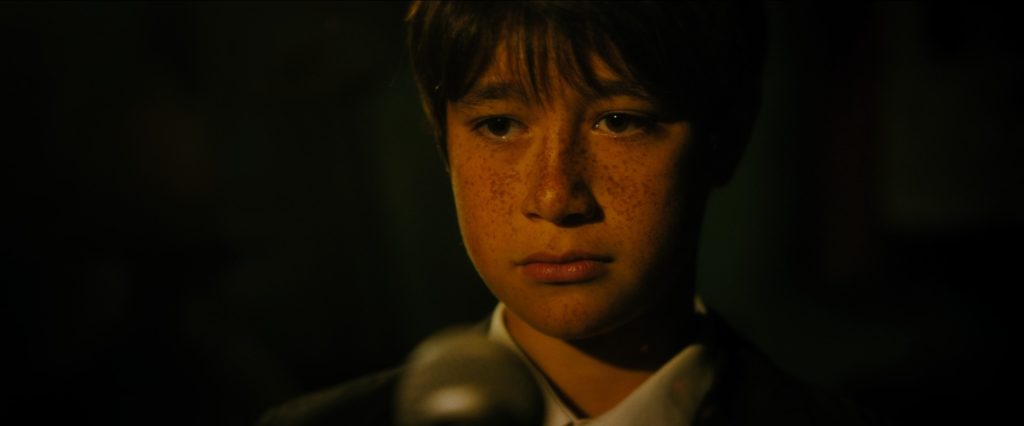
BC: How did you use your framing and composition to convey the children’s perspectives?
RC: I always tried to be on the same level as the children. Never above them looking down. We wanted to be with them. I always tried to see what they would see and be with them as much as possible. I tried to be as truthful as possible. We didn’t want anything too tricky or showy that would take you out of the film. It was a shared story between Adam and Evie and we tried to honour that as much as possible.
BC: Who did the grade? What look did you aim to achieve?
RC: Jateen Patel at Harbor. He did an incredible job. He is my regular colourist and we’ve worked together on loads of projects now. He is such a great collaborator and my work is always greatly enriched for having him involved.
Our aim was to create a film that felt honest and real, with moments of wonder. I wanted it to look and feel like a memory or an old photo. Like adult Evie could be looking back on a formative summer holiday from her childhood. It was also important for it not to feel too nostalgic or sickly sweet. The film has real moments of darkness and we wanted to lean into those. We also experimented with different types of grain which got added to the finished film.
BC: What is your proudest moment from the entire production process?
RC: Honestly, the whole film. I remember driving home from Cornwall after the shoot feeling very proud. I knew we’d done everything possible to try to make the film Lucy wanted, to do justice to her incredible script and protect what she held dear, and honour the wonderful young cast who were in front of the lens.
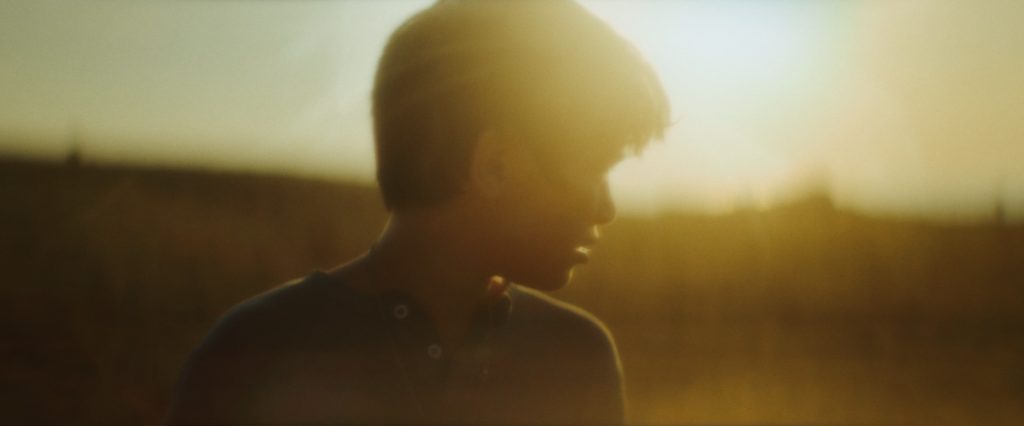
BC: What lessons have you learned from this shoot that you’ll take onto your next project?
RC: You don’t need as much light as you think you do… Handheld operating at 10-year-old-person level is no joke… You’re only as good as your team (I knew this already but it’s always good to remember)… Location shooting in Cornwall in the summer is pretty sweet. Putting 10-and-12-year-old non-actors in charge of lighting a whole scene from the top of their head was pretty scary!
I did a lot of troubleshooting on this project, trying to come up with clever or simple solutions to schedule, budget or logistical issues. I did lots of tests and R&D and put forward loads of potential plans or answers. It’s quite satisfying when you think something is impossible or can’t be done and you find a way round it. There’s always a way. I think that’s one key takeaway from Edge of Summer; we worked really hard in prep and throughout the shoot to do as much as we could with the short amount of time and money we had.
BC: Are there any crew members not yet mentioned that you’d like to highlight?
RC: My regular first AC, Louise Murphy, who also operated B camera on the film. She is an incredibly storyteller, has amazing instincts and I’d be lost without her. We also shared a caravan on the shoot so we must like each other!
DIT Adam Rhodes, who I worked with for the first, but not the last, time on this film. He came on board with the right attitude and I loved having him as part of the team.
Local camera AC Nick Baker and camera trainee Matt Keeble who supported us throughout the shoot.
Key grip Jodi Clark – this was our second project together. Jodi had done a lot of work in Cornwall and the surrounding areas so she was very familiar with working down mines, in caves, on cliff tops etc. and coming up with clever solutions and work-arounds to practical problems.
Producers and all-round fixers, team cheerleaders and morale officers Julia Nottingham and Ariadne Kotsaki.
